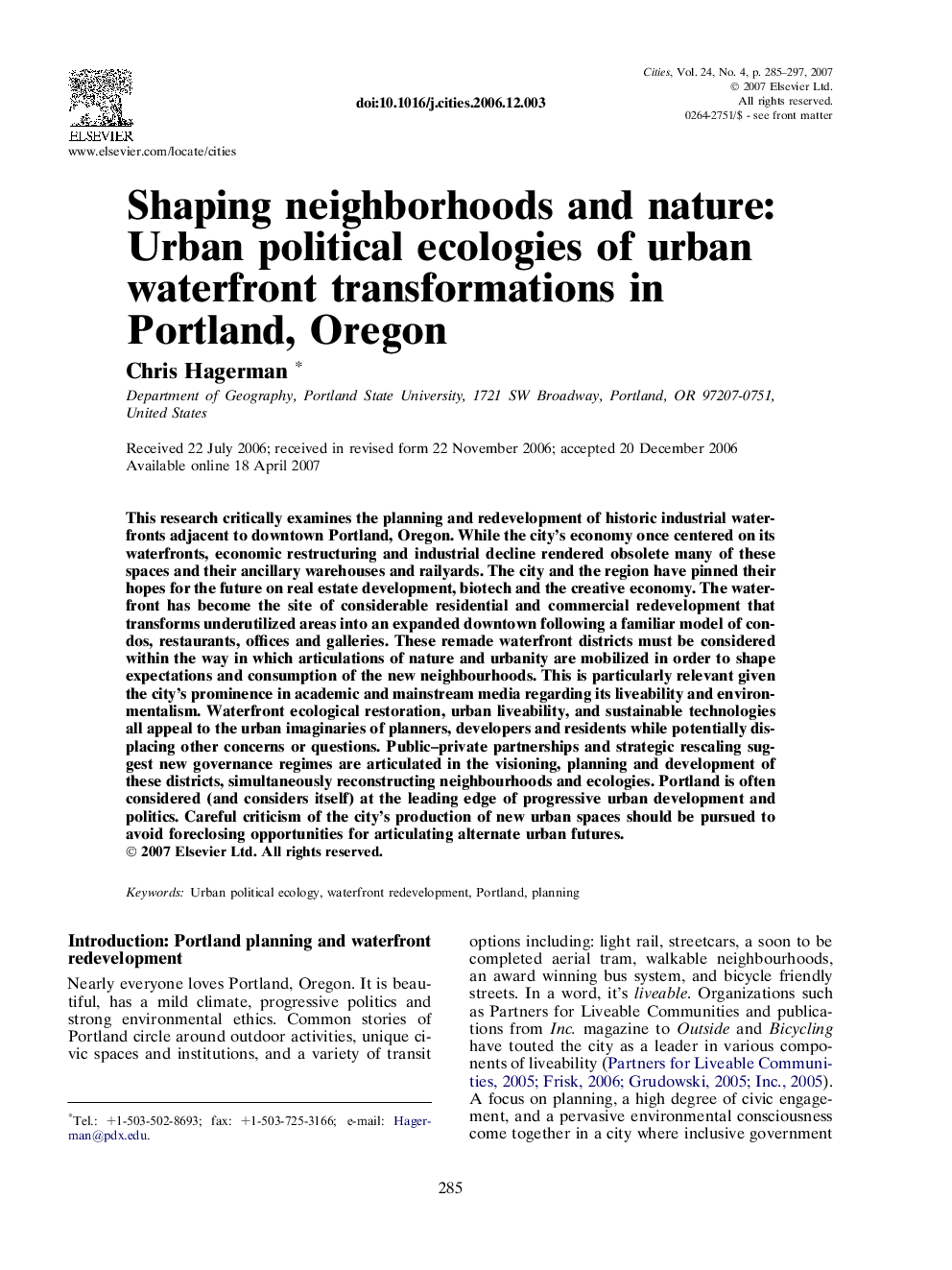| Article ID | Journal | Published Year | Pages | File Type |
|---|---|---|---|---|
| 1008981 | Cities | 2007 | 13 Pages |
This research critically examines the planning and redevelopment of historic industrial waterfronts adjacent to downtown Portland, Oregon. While the city’s economy once centered on its waterfronts, economic restructuring and industrial decline rendered obsolete many of these spaces and their ancillary warehouses and railyards. The city and the region have pinned their hopes for the future on real estate development, biotech and the creative economy. The waterfront has become the site of considerable residential and commercial redevelopment that transforms underutilized areas into an expanded downtown following a familiar model of condos, restaurants, offices and galleries. These remade waterfront districts must be considered within the way in which articulations of nature and urbanity are mobilized in order to shape expectations and consumption of the new neighbourhoods. This is particularly relevant given the city’s prominence in academic and mainstream media regarding its liveability and environmentalism. Waterfront ecological restoration, urban liveability, and sustainable technologies all appeal to the urban imaginaries of planners, developers and residents while potentially displacing other concerns or questions. Public–private partnerships and strategic rescaling suggest new governance regimes are articulated in the visioning, planning and development of these districts, simultaneously reconstructing neighbourhoods and ecologies. Portland is often considered (and considers itself) at the leading edge of progressive urban development and politics. Careful criticism of the city’s production of new urban spaces should be pursued to avoid foreclosing opportunities for articulating alternate urban futures.
